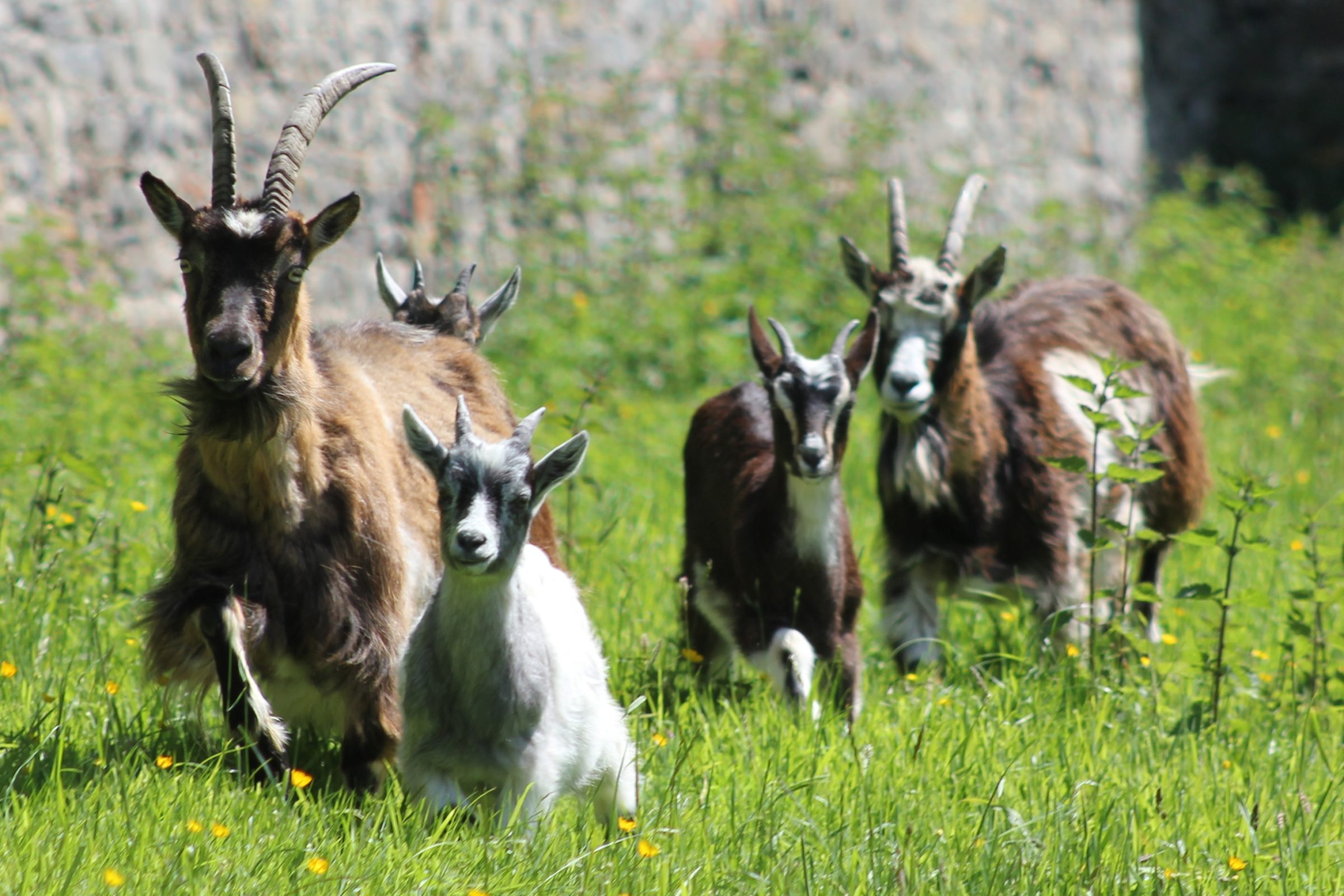Volunteer Health & Safety
Guidelines
Please read all Health & Safety information carefully, and complete the Volunteer Contact information at the end of the form and click accept to confirm you have read and understood the information provided.
Any volunteers under 18 and their understanding and compliance with the safety measures outlined, are the responsibility of their supervising adult/legal guardian.
- Preparation:
Always wear suitable clothing: • Wear walking boots or walking shoes with good grip, make sure any laces are double tied and secure, (slip-on shoes are not suitable for entering enclosure or paddocks) • Wear Gloves where possible • Wear warm/rainproof clothing if needed for the conditions • Please ensure cords and pull-strings are secured and contained to avoid snagging/catching on fencing, bushes or animal’s horns.
Avoid Slips, Trips and Falls
- Assess surroundings and remain aware of the terrain, and changing weather and lighting conditions.
- Take extra caution if conditions become wet/icy especially on uneven terrain
- Avoid hazardous conditions and ensure visibility, bring a torch if lighting is low
- Electric fencing: Always assume fences are electrified and avoid making any physical contact
Take Care Around Livestock
- Take Necessary Precautions when handling and herding livestock
- Approach livestock slowly and avoid sudden movements or sounds that could startle the animals.
- Always remain spatially aware of your surroundings and your proximity to the animals and any occasions of increased risk, at all times.
- Take extra care not to trip over goats either unseen behind you, or under foot especially when the animals are running for feed or running away from a threat (eg Dog off-leash). Take action to give the herd space in such circumstances.
- Take additional precautions to avoid contact with horns when in enclosed spaces like sheds, or when feeding by hand. Stay in a standing/upright position in such circumstances to reduce risk of head/eye injury.
- Continuous awareness of the location of the entire herd, is particularly important, in enclosed spaces, during stock counts, when moving animals between locations, and when locking herd in for the night.
Feeding Animals
- Before approaching trough with feed bucket – Ensure feeding troughs are upright, clean and on stable ground in order to reduce possible physical contact with excited animals.
- Evenly distribute feed along the length of the trough in one swift pouring-movement and immediately withdraw to avoid being stood on, bumped or coming into contact with horns.
IMPORTANT:
NEVER lean over feeding-animals at the trough to finish pouring feed. A startled animal can quickly lift their head from feeding and can come into contact with you.
Hygiene
ALWAYS CLEAN YOUR HANDS after handling the troughs or touching or feeding the goats / handling gates / feed buckets. Where possible wear gloves.
Goat Behaviour & Your Behaviour
- Be aware that the goats may challenge each other (pushing, butting, rearing) – if this behaviour occurs in your vicinity. Keep calm and step away and keep clear of that interaction.
- These animals are very intelligent and inquisitive so please be aware they may approach
- Never pull goats by their horns, Never strike the animals or shout at them. Remaining calm and respectful of their natural behaviour is a pre-requisite for contact with our animals.
Goat Discpline:
If a goat is repeatedly challenging you or putting their hooves up on you – you can pinch/tweak (twist) their ear at the tip to deter them from that behaviour. Do so in a quick confident motion, and with minimal force! Do not cause pain to the animal, and never do so by making contact with their ear tag! This is a deterrent to encourage the animal to cease a potentially risky behaviour that could cause a volunteer-injury. It is not a punishment!
Etiquette
- Always close and properly secure gates behind you, when entering the paddock to feed, and when exiting to ensure no goats escape and reduce risk of dogs entering
- If you see a dog off-lead please ask the owner to put their dog on a lead. If you see a dog barking at the goats near to the enclosure/goats’ location please explain (politely) to the owner that it may be causing stress to our animals. Always assess the goats and dog’s behaviour and assess the risk.
- Always approach and move slowly around livestock so as not to startle or stress them. No screaming or shouting when around the herd. If children or adults are being loud or shouting around the animals please politely communicate that it will cause stress to the animals.
Confidentiality & Communications
- Please never share the exact location of our herds, grazing sites, sanctuary or farm to ensure the herd’s safety and security. We do not give locations of herds in the wild either for the same reason.
- Please feel free to take photos for your own personal use and enjoyment. However we would ask that you do not share/post any content (photos, video, comments etc) to the internet/social media without first contacting [email protected], as the Old Irish Goat Society is following a structured Communication Strategy.
Points of Contact:
Old Irish Goat Society – Dublin
Melissa Jeuken : [email protected]
Old Irish Goat Society Mayo / Old Irish Goat Centre –
Please email: [email protected]
